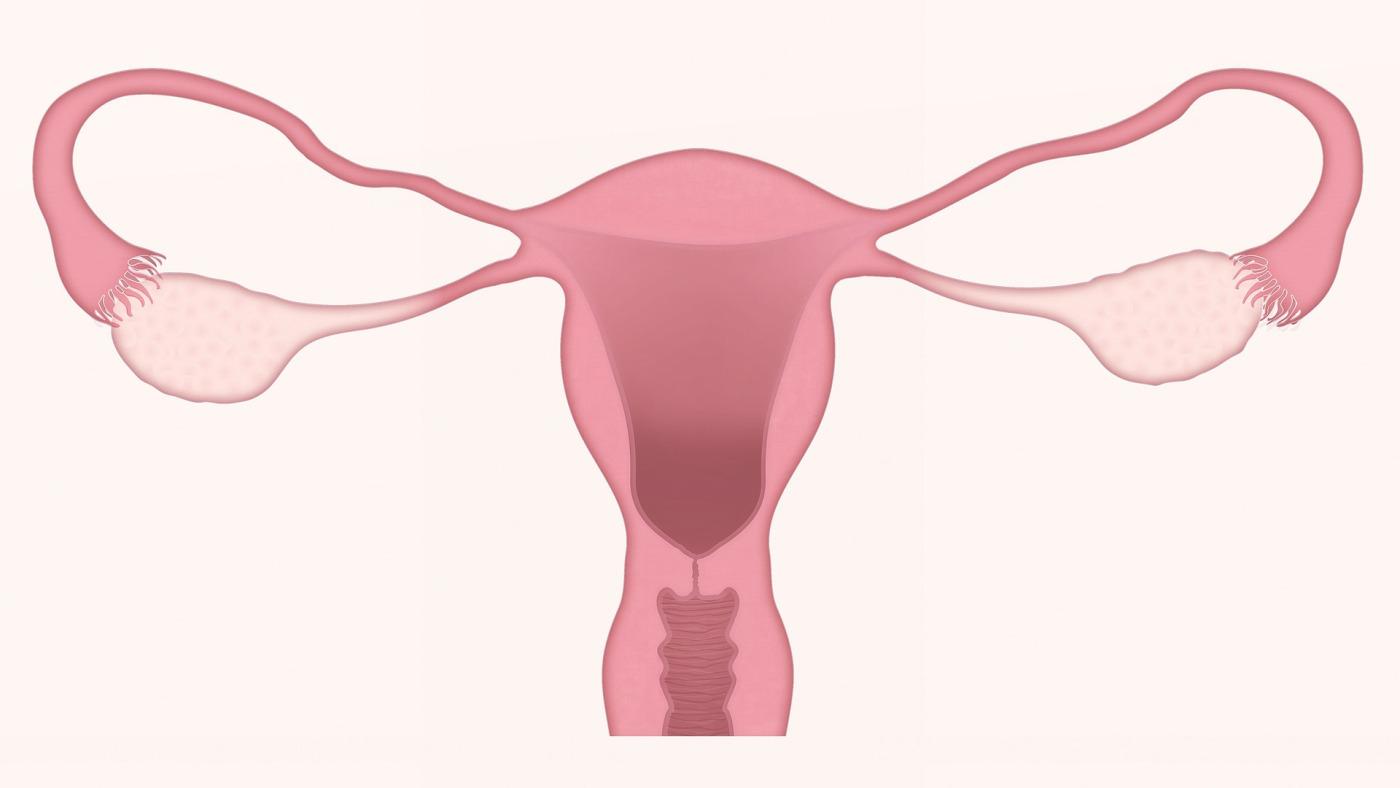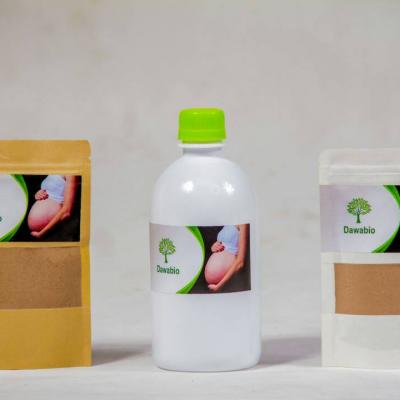The infertility is not only related to ovulation problems. Problems can also arise with the tubes when they are blocked or damaged. The egg and the sperm just can't seem to meet. However, Dawasanté experts provide you with a natural herbal treatment to unblock your tubes permanently without side effects and without surgery.
Click on the image below to discover this natural treatment.
We deliver all over the world.
For more information, you can contact our experts on +229 51374202 direct line or by WhatsApp at the same number.
What are the tubes?
- The uterine tubes or fallopian tubes are part of the genital system. There are two, which are on either side of the uterus. They connect the ovaries and the uterus via the pinna.
- The tube-shaped uterine tubes are used to receive the oocytes released every month from the ovaries and to transport them to the uterus. When the egg is expelled by the ovaries during ovulation, it is sucked in through the pinna of the tube. Fertilization (meeting between the egg and the sperm ) takes place in the tubes, during the journey from the egg to the uterus.
- For a woman to get pregnant and have a baby, the tubes must be functioning normally and be intact (at least one!). In 15% of cases of fertility disorders, the causes are linked to an abnormality of the tubes.
Tubal obstruction: what is happening?
- When the tubes are blocked , it will interfere with the movement and progression of the egg and sperm. Either the egg cannot meet the sperm (and there is no fertilization) or there is fertilization, but the egg cannot progress to the uterus.
- When fertilization does not take place or remains impossible, the egg is automatically lost in the abdominal cavity. We are talking about tubal sterility.
- If the blockage is not complete, the fertilized egg will be able to circulate, but will have difficulty making its way to the uterus. The egg will then implant in the tube and evolve into an ectopic pregnancy. At some point, the tube will rupture, causing internal bleeding.
Tubal abnormalities: what are the causes?
Many conditions can lead to blockages in the tubes and cause infertility. This anomaly is linked to genital infections, endometriosis or a sequel to surgery (adhesion for example).
Genital infections
- Genital infections are most often the result of sexually transmitted diseases that affect the tubes.
- Salpingitis is an inflammation of the tubes due to a genital infection. It can be acute (that is, the infection is recent) or chronic (the infection has occurred in the past and still persists) and causes obstruction of the tubes. Infections associated with salpingitis are usually caused by Chlamydia, mycoplasmas or gonococci. These are the germs responsible for sexually transmitted diseases, but which often go unnoticed.
- To prevent these infections, it is recommended to protect yourself during sexual intercourse (especially in the case of multiple or occasional partners) and regular monitoring by your gynecologist is necessary.
Other infections
- Other infections can infect the tubes. In case of peritonitis (an infection of the peritoneum) for example, following a complicated appendicitis, the tube can be infected.
- Uterine infections can also block the tubes. In the event of a history of abortion or miscarriage, tissue scars after these events will develop and form obstacles in the tubes. This is also the case with one or more history of ectopic pregnancy.
Endometriosis
- The Endometriosis is a gynecological condition in which the endometrial tissue which normally covers the uterine wall, is found in the fallopian tubes. The abnormal presence of this uterine lining in the tubes will block the progression of spermatozoa to the egg and prevent fertilization.
Surgical sequelae
- We talk about adhesion when the walls of the tubes stick together, preventing the movement of the egg and sperm. These adhesions are sometimes post-operative complications. They can form following an appendectomy or surgery of the ovaries or uterus. These post-operative complications are rare today because they are easily controlled.
How do you know if the tubes are blocked?
-
The obstruction in the tubes is often difficult to detect because there are few symptoms (possibly some abdominal pain or more abundant vaginal discharge). Consultations and analyzes are only carried out during the infertility assessment carried out when the woman who wants a child cannot get pregnant, after having had regular and unprotected sex for 1 year. During this assessment, in addition to the questioning and clinical examinations, the doctor will have to prescribe several examinations and analyzes to identify the problem.
- The specific test to detect an abnormality in the patency of the tubes is hysterosalpingography. It consists of injecting opaque product from the cervix and following the progress of this product in the tubes by an x-ray.
- In addition to the hysterosalpingography, the doctor may need to perform a hysteroscopy, an examination which allows the uterine cavity to be visualized using an endoscope (an optical fiber) through natural channels.
- A laparoscopy can also be considered: under general anesthesia, it allows the tubes to be examined from "inside" with an optical device after having made a small incision at the navel.
Tubal abnormalities, what treatment?
- Treatment will depend on the cause of the obstruction. Only the doctor is able to prescribe the appropriate drugs or treatment methods. The need for treatment depends mainly on the state of patency of the tubes, the state of the genitals and the state of health in general. You are free to discuss all the treatment options that may be available to you to find the most suitable for you.
- The doctor may indicate laparoscopic surgery (laparoscopy), if your state of health allows it and according to certain parameters evaluated by the doctor. It is a surgical procedure performed under general anesthesia.
- Depending on the state of the patency of the tubes, the doctor may suggest a salpingectomy, a surgical procedure that involves removing the blocked and diseased tube, especially in the case of a hydrosalpinx (the tube is full of liquid). You can then be a candidate for in vitro fertilization.
- Tubal cannulation is a less burdensome surgical procedure than laparoscopic surgery, performed when the obstruction is located closer to the uterus. The operation consists of introducing a cannula through the uterus to unblock the tube.
Good to know: if only one of your tubes is blocked, treatment is not always mandatory, pregnancy is possible. If both are blocked, there are other options available to help you get pregnant, especially if the methods of treating blocked tubes remains thin. The IVF is now the oldest method, but the most appropriate for getting pregnant if tubes plugged.
If your fallopian tubes are blocked, it will cause temporary infertility since the meeting between the sperm and your oocyte cannot take place. What are the causes of blocked tubes ? Are there any treatments to remedy blocked tubes
The uterine or fallopian tubes are an integral part of the female genital system . These tubes, since there are two, play an essential role in reproduction: they connect the ovaries and the uterus by the pinna. Their main objective is to receive the eggs released every month during the period of ovulation and to lead them to the uterus. The phenomenon of fertilization occurs in the tubes during the path between the egg and the uterus. In order to get pregnant, the tubes have to work properly. Indeed, this would prevent the meeting between the male and female gametes. Note that 15% of infertility cases result precisely from this style of abnormality in the tubes .
The causes
There are many reasons for the blocked fallopian phenomenon . First of all, there is salpingitis which is an inflammation of the tubes. Then comes the case of genital infections , usually caused by sexually transmitted diseases. That's why doctors recommend protecting yourself with each intercourse , especially in the case of multiple partners. This can indeed lead to infertility in some cases. The endometriosis is itself a disease that can also affect the fallopian tubes. It can interfere with the path of sperm to the oocyte feminine. Inflammation of the small pelvis can affect and obstruct the upper part of the reproductive organs. As for abnormalities affecting the vagina and uterus , they can also be a source of possible infertility . Myomas, which are usually benign growths, can also come into a tube and block it. Finally, certain surgical sequelae can play a role in the malfunction of the tubes .
Tubal obstruction and treatment
Obstruction in detail
First of all, you must first be sure that your tubes are well blocked. The symptoms are not necessarily obvious to detect because the pain is minimal. It is when you go for analyzes (such as during the infertility assessment ) that we can see if this is the case or not. This very specific examination consists of injecting a product from your cervix and following its progress to the tubes using an X-ray. The blocked tubes can also be detected in other tests such as hysteroscopy and laparoscopy. If your fallopian tubes are indeed blocked, it will upset or simply make fertilization impossible. When this is impossible, we speak of tubal sterility. If the obstruction is not complete, the fertilized egg will implant in the tube before creating a uterine pregnancy, possibly causing internal bleeding if the tube ruptures.
Possible treatments
The treatment of this pathology will depend both on the nature and on the cause of the obstruction. You will need to go through stimulation of ovulation by administering drugs in order to produce eggs in each cycle . The intervention is recommended for women with both tubes blocked, but it is not always enough to improve fertility . In some cases, women will then use IVF to get pregnant.
When the fallopian tubes are blocked, the meeting between a sperm and an oocyte cannot occur. This obstruction therefore constitutes a temporary cause of infertility or, in the most severe cases, of sterility. There are many reasons for the obstruction of one or both uterine ducts. What are they ? What are the possible treatments? Response elements.
What are the fallopian tubes used for?
Better known as the uterine tubes , the fallopian tubes are an integral part of the female genital system. Thus, the two tubes play a major role in the process of human reproduction since they connect the ovaries and the uterus. It is in them that the oocyte, resulting from the ovary, transits and can be fertilized by a sperm. In some cases, these uterine tubes can become blocked, preventing the meeting of male and female gametes.
Blocked fallopian tubes: what are the causes?
There are many possible reasons for the obstruction of one or both fallopian tubes :
- the PID : it corresponds to inflammation of the fallopian tubes. It is mainly caused by bacteria from the Chlamydiae family , although in some cases gonococci or mycoplasmas can be responsible.
- genital infections: these are often caused by sexually transmitted infections (STIs). It can lead to cases of infertility or sterility.
- the Endometriosis : This disorder is due to an abnormal proliferation of endometrial tissue outside the uterine cavity. This gynecological pathology can affect the fallopian tubes and hinder the progression of sperm to the oocyte.
- inflammation of the small pelvis: this is an upper genital infection (IGH), that is to say of the upper part of the reproductive organs.
- congenital anomalies of the uterus or vagina: these so-called "Mullerian" anomalies can reduce a woman's chances of getting pregnant.
- the myomas : these benign growths can be housed in a trunk and obstruct the passage.
Click on the image below to discover this natural treatment.
We deliver all over the world.
For more information, you can contact our experts on +229 51374202 direct line or by WhatsApp at the same number.


